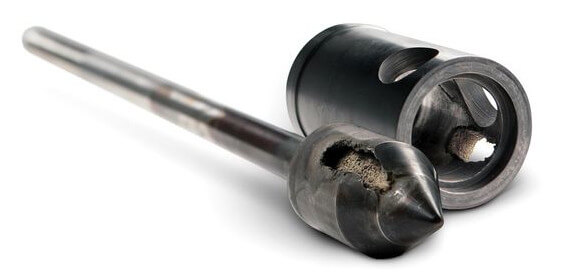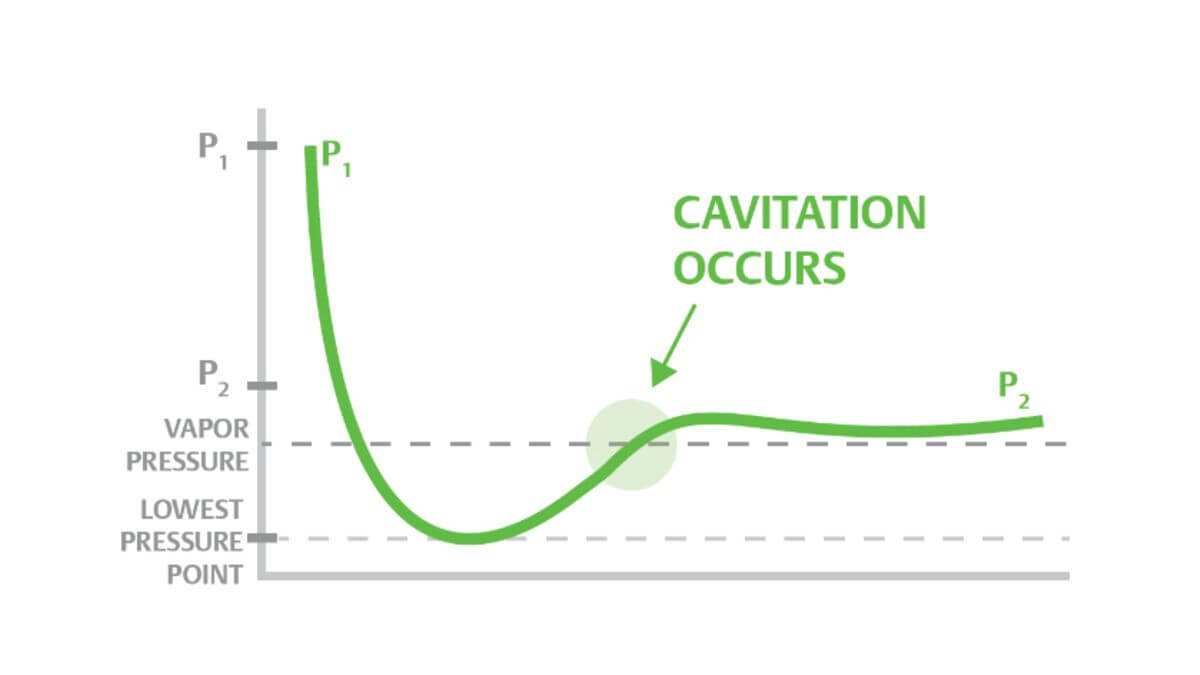Control valves can be subjected to quite a bit of punishment by the flowing process in some applications. One of these destructive actions is cavitation.
In a Flow Control article, Understanding and solving control valve cavitation problems, Emerson’s Thirumalai Karthik (TK) Arasu opens highlighting the potential severity of cavitation.
Unanticipated cavitation can destroy a control valve’s internals and even result in catastrophic failure, so it is important to understand what cavitation is, why it occurs, and how to address it in control valve applications.
TK describes a common symptom.
You notice the pipe and valve shaking violently, and it sounds like rocks are passing through the valve, but you know the line contains clean water. What is going on?
As background, he describes the physics which leads to this condition.
By Bernoulli’s law, the total energy at every point is constant, so if velocity is increased, pressure must fall. This explains the pronounced dip in the pressure curve. As the fluid passes through the restriction, it must speed up, lowering the pressure at that point. Vena contracta is the minimum area of a flow stream, and it is located downstream of the flow constriction. This is the point in flow where the average flow velocity is the highest, and mean pressure is the lowest. Once the liquid enters the much larger outlet piping, it slows down, and some pressure is recovered.
…the instantaneous pressure in the vena contracta falls below the vapor pressure, then vapor bubbles will begin to form. However, when the pressure recovers above the vapor pressure downstream of the vena contracta… the bubbles (or vapor cavities) will immediately collapse back into the liquid.
The damage from cavitation occurs when these bubbles collapse because they create:
…high-speed, destructive microjets and localized shock waves.
 This cavitation not only can damage the valve internals but can:
This cavitation not only can damage the valve internals but can:
…also limit valve flow capacity. As the level of cavitation rises, the amount of vapor in the valve outlet begins to restrict flow.
TK points the ISA Recommended Practice 75.23: Considerations for Evaluating Control Valve Cavitation which helps users and suppliers to better understand the nature and hazards of cavitation in control valves.
Read this highly educational article for more as TK shares ways to address cavitation through avoidance and if not possible, design improvements.
Visit the Control Valves section on Emerson.com for more on cavitation and the types of control valves and anti-cavitation valve trims to help eliminate or control cavitation damage in clean and dirty service. You can also connect and interact with other valve experts in the Valves, Actuators & Regulators group in the Emerson Exchange 365 community.






